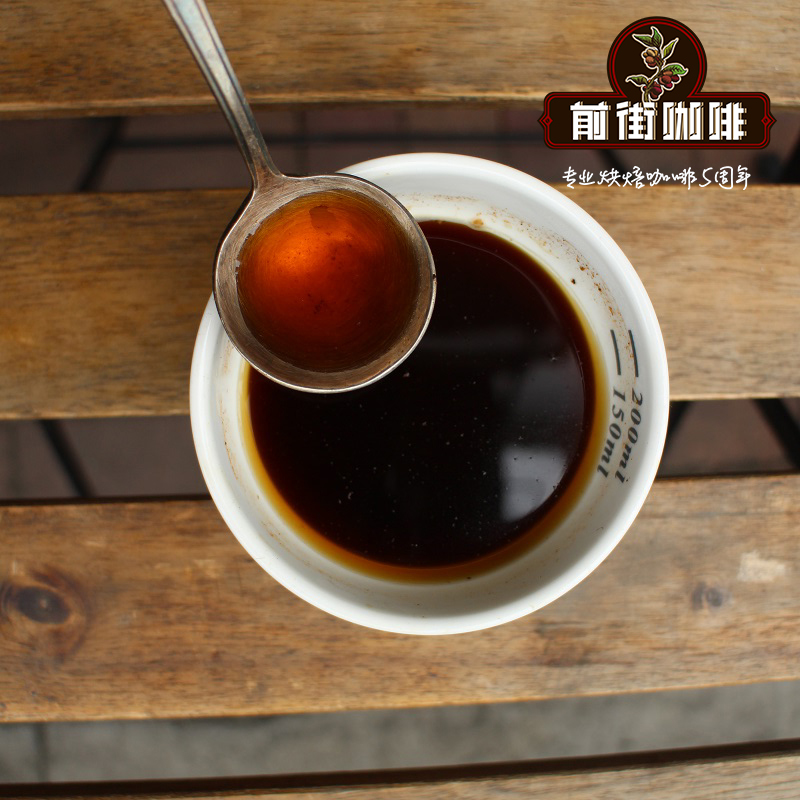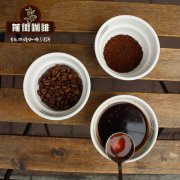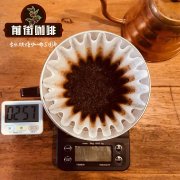Pure pedigree water washing Yunnan small coffee beans Baoshan Tiebika what is the taste? In the end, Yunnan mouth

Professional coffee knowledge exchange More coffee bean information Please pay attention to coffee workshop (Weixin Official Accounts cafe_style)
Pure bloodline washed Yunnan Arabica beans Baoshan iron pica is what taste? How does Yunnan taste?
To judge whether a bean tastes good or not based on some basic factors, there are no more than the following:
Look at beans: 1. Variety 2. Elevation 3. Treatment 4. Baking 5. Extraction
1. Look at the variety: iron pica, native species. We are commenting on fine coffee, Blue Mountain, KONA is also an iron pickup species, back to the pedigree theory, have to admit that a good bean good pedigree accounts for a large proportion.
2. Look at the planting height: For Arabica, 1200 meters is the watershed of quality. This Yunnan Baoshan iron pickup truck is planted at 1200 meters.
3, look at the treatment method: Throughout the treatment method, nothing more than two directions, one is cleaner, such as washing, one is more flavor, such as sun exposure.
4. Look at roasting: Qianjie focuses on roasting for 5 years, and moderate roasting expresses the regional flavor of Yunnan fine coffee.
Popular science, some basic information of this Yunnan bean, we buy back, how to brew, we cup test what flavor, you can know about it.
Yunnan Baoshan Typica
Yunnan Tiepi Card
Name: Huaguo Mountain
coffee-producing countries: china, yunnan, baoshan
Coffee Type: Typica
Production altitude: 1200M
Quality grade: AA
Treatment method: washing
The history of coffee cultivation in Yunnan dates back to 1892. A French missionary brought coffee seeds into Yunnan from abroad and planted them successfully in a valley in Binchuan County, Yunnan Province. The main variety produced was Tiepica, the so-called Arabica coffee, commonly known as Yunnan Arabica coffee in China.
Yunnan arabica coffee, rubiaceae, coffee genus.
A good pedigree accounts for a large proportion of a good bean, select the right variety, plant at the appropriate altitude, mature after the test can express the unique flavor of the treatment, Yunnan iron card planting area is mainly distributed in Lincang, Baoshan, Simao, Xishuangbanna, Dehong and other places in Yunnan Province.
The history of coffee cultivation in Yunnan dates back to 1892. A French missionary brought coffee seeds into Yunnan from abroad and planted them successfully in a valley in Binchuan County, Yunnan Province. The main variety produced was Tiepica, the so-called Arabica coffee, commonly known as Yunnan Arabica coffee in China.
Yunnan arabica coffee, rubiaceae, coffee genus.
A good pedigree accounts for a large proportion of a good bean, select the right variety, plant at the appropriate altitude, mature after the test can express the unique flavor of the treatment, Yunnan iron card planting area is mainly distributed in Lincang, Baoshan, Simao, Xishuangbanna, Dehong and other places in Yunnan Province.
Looking at it all the way, it was actually very easy to recognize it in the vast area of katim. When you look closely, you will see that each species has its own appearance. The leaves of Katim are all hanging down, and the tree looks like it is wearing a cloak. Tibika, on the other hand, has branches upward and new leaves with copper tops growing at the top of the tree.
planting altitude
For Arabica, 1200 meters is a watershed in quality. Baoshan is above 1200 meters above sea level, with an average temperature of 21.5℃ and a maximum temperature of 40.4℃. It is basically frost-free all year round, forming a small regional climate that protects coffee growth and is recognized as the best coffee producing area. Planting areas are mainly distributed in Lincang, Baoshan, Simao, Xishuangbanna, Dehong and other prefectures, where the cultivation of Arabica coffee to strong but not bitter, fragrant but not strong, well-proportioned particles, mellow rich, and with fruit flavor.
Treatment method: washing
Harvested berries are peeled to remove most of the pulp from the beans. The beans are then directed to a clean tank where they are soaked in water for fermentation to remove the remaining pulp layer. Through washing treatment, immature beans and defective beans will be selected due to buoyancy, and the fermentation process is better controlled, so the flavor is not as miscellaneous as sun-dried beans, but presents obvious acid, slightly more complex and cleaner taste.
[Baking Analysis]
The moisture content of beans is 10.9%, so the baking plan is to enter the beans at 200 degrees, and then the fire is small to speed up the dehydration. After the dehydration stage, open the stroke door and the medium fire to make the Maillard reaction time not too rapid.
The baking process is as follows: HB roaster, bean input 2Kg,
Temperature recovery point: 1 min 32, 92.5°C
Yellowing point: 5 minutes 40, 148.5°C
First explosion: 8 minutes 59 seconds, 188.0°C
Development 3 minutes
Heating: 12 00, 196°C
[Cup Test]
After baking for 12 hours, cup test: rich fruit fragrance, melon, herbal aroma, soft entrance, middle nuts, milk chocolate, plum acid at the end, lively and bright, cheeks salivation, balanced feeling, medium body fullness, temperature from hot to warm can feel sour and sour layers, sweet first and sour, apricot peach, citrus acid, aftertaste black tea, a little brown sugar.
[Manual parameters]
Filter cup selection: V60 filter cup, kalita fan and cake cup can be
V60 for demonstration
Parameters: 15g powder, water temperature 90 degrees,
Grinding 4, water powder ratio close to 1:15, total time about 2:00
Method: 25-30g water steams, steams for 30s, the first stage water injection to 120g water cut off, vertical water flow, small water flow slow circle; the second stage water injection to 225g, water flow and circle speed slightly faster, reduce powder particles blocking filter cup, resulting in excessive extraction.
Other extraction suggestions:
Normal pressure: 3.5-4 degree of abrasiveness/water temperature 90 degrees
Siphon: 4 degrees of grinding, water temperature: 89 degrees
Aile pressure, 2.5 degrees of abrasiveness, water temperature 88 degrees
Important Notice :
前街咖啡 FrontStreet Coffee has moved to new addredd:
FrontStreet Coffee Address: 315,Donghua East Road,GuangZhou
Tel:020 38364473
- Prev

How to grow high-quality coffee bean seeds? What are the planting conditions that affect the growth of coffee beans?
Professional coffee knowledge exchange more coffee bean information please pay attention to the coffee workshop (Wechat official account cafe_style) how to grow high-quality coffee bean seeds? What are the planting conditions that affect the growth of coffee beans? Coffee beans are generally graded according to their size, defect rate and altitude. The size and defect rate of raw beans are easy to understand, and many people do not quite understand why some producing areas
- Next

Recommendation of individual coffee beans | Peru CECANOR Cooperative | elegant peaches and oak aromas
Professional coffee knowledge exchange more coffee bean information please follow the coffee workshop (Wechat official account cafe_style) front street coffee recommendation individual coffee bean rising star-Peruvian coffee beans from the fair trade certified cooperative CECANOR (Central de Servicios Cafetaleros del Nor Oriente). Founded in 1999, located in Lambay, Peru
Related
- Detailed explanation of Jadeite planting Land in Panamanian Jadeite Manor introduction to the grading system of Jadeite competitive bidding, Red bid, Green bid and Rose Summer
- Story of Coffee planting in Brenka region of Costa Rica Stonehenge Manor anaerobic heavy honey treatment of flavor mouth
- What's on the barrel of Blue Mountain Coffee beans?
- Can American coffee also pull flowers? How to use hot American style to pull out a good-looking pattern?
- Can you make a cold extract with coffee beans? What is the right proportion for cold-extracted coffee formula?
- Indonesian PWN Gold Mandrine Coffee Origin Features Flavor How to Chong? Mandolin coffee is American.
- A brief introduction to the flavor characteristics of Brazilian yellow bourbon coffee beans
- What is the effect of different water quality on the flavor of cold-extracted coffee? What kind of water is best for brewing coffee?
- Why do you think of Rose Summer whenever you mention Panamanian coffee?
- Introduction to the characteristics of authentic blue mountain coffee bean producing areas? What is the CIB Coffee Authority in Jamaica?

